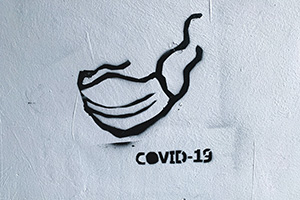
Health disparities are not a new concept, but the COVID crisis is shining a bright light on just how damaging these disparities are to communities of color. We are now seeing this play out, as public health officials anticipated, having a more substantial impact on low income and minority families, particularly Latino families.
In our work at Vibrant Health, a Federally Qualified Health Center in Wyandotte County, KS, we see a little more than 10,000 patients a year with more than 70% of them being Latino. Our organization is working daily to close the gap on health disparities and health outcomes and when it comes to the COVId-19 crisis the need for access is tremendous. By now the stats are well known. In the state of Kansas, Wyandotte County ranks near the bottom in terms of health outcomes. Johnson County ranks near the top. Health outcomes aren’t an issue related to number of health care providers in the community, they are an issue of access and opportunity.
Health is a poverty issue. And poverty is an issue of race.
In Kansas, 28% of African Americans, 22% of Hispanics and 16% of Native Americans live in poverty, while 9% of the white population lives in poverty. In Wyandotte County, just over half the population is minority, so you can do the math then on how high the poverty rate is overall in the county. How does this connect to COVID-19 and our response?
- It means that many of the residents of Wyandotte County don’t have the option of working from home. They work in hourly jobs, many likely deemed essential, that require them to be at risk each day. Higher risk equates to more likely to be sick with the virus or asymptomatic carrier – with a high risk of passing on to others.
- It makes clear that when part of our community is at greater risk, all of our community is at risk. When a pandemic hits, we are all equally at risk. Taking better care of our neighbors with the least access and opportunity, improves all of our lives.
- It further reinforces the single most significant thing we can do – either state – to help families out of poverty and to improve health would be to expand Medicaid.
As we think about how we best serve our minority communities, particularly the Latino community, we have to work to overcome a number of challenges.
- Fear – It is no surprise that the climate around immigration in this country is toxic. We can debate why that is, but the reality is apparent to everyone. This creates a dynamic where Latino residents avoid engagement with authority that could be seen as opening the door to ICE or other law enforcement. Even an entity like the public health department can be seen as a risky place to access services and interact.
- Uncertainty – Months after this crisis began, we still hear concerns about a positive COVID test being a death sentence or at the very least an automatic hospital stay that many people, particularly those uninsured, can’t afford.
- Misinformation – There is a tremendous amount of false information spreading every day about COVID-19. All of the community organizations working to inform their clients and share information about access are fighting an uphill battle with the piles of false and misleading information shared on social media.
The most important lesson this pandemic is teaching us is the importance of creating a strong safety net to support all families in our community.
When some of us are at greater risk, we are all at greater risk.
Photo by Adam Nieścioruk on Unsplash





